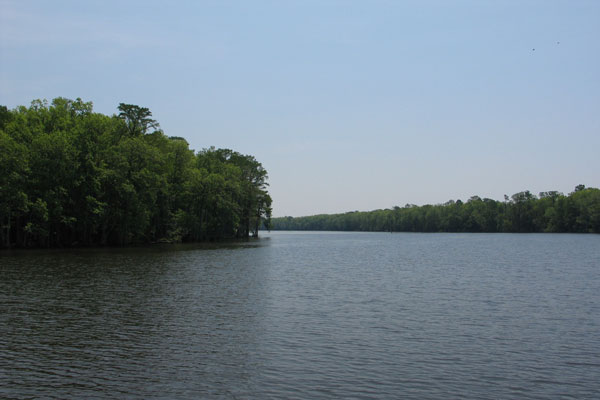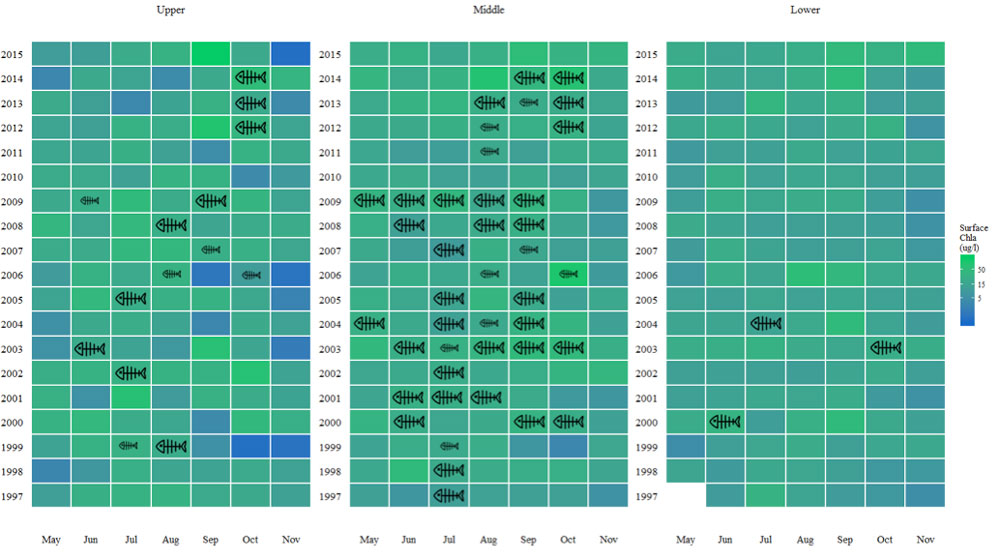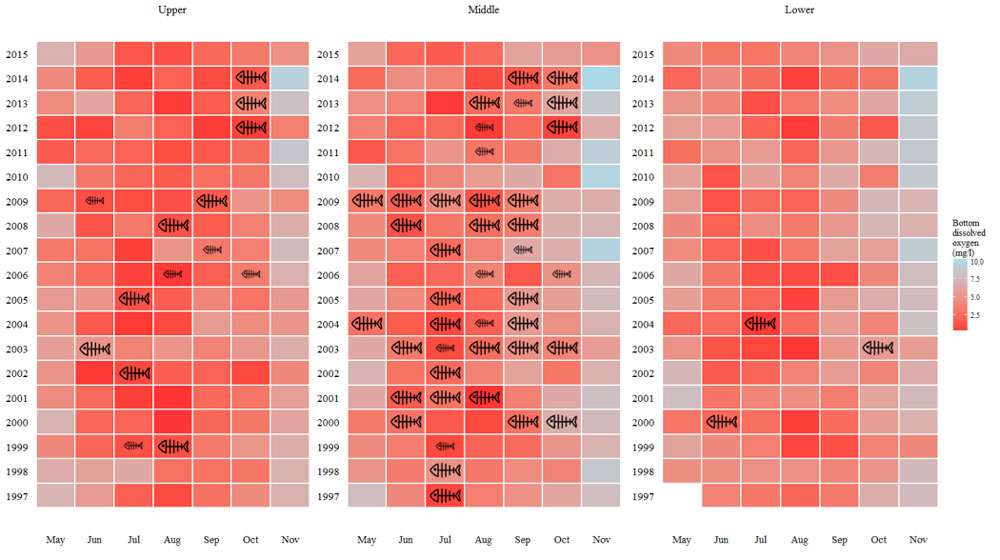
North Carolina Sea Grant-funded scientists are studying hypoxia and algal blooms in the Neuse River Estuary. Photo courtesy UNC IMS
Hypoxia and algal blooms are common problems in the upper and middle parts of the Neuse River Estuary in North Carolina.
In the past four decades, rapid growth around the watershed has resulted in the conversion of forests into agricultural and urban landscapes, as well as a rise in wastewater discharge. These changes have increased the amount of nutrients, particularly nitrogen and phosphorus, in the estuary — what scientists call anthropogenic nutrient loading.
While hypoxia and algal blooms can occur naturally, anthropogenic nutrient loading has been shown to intensify these phenomena in many coastal systems.
Frequent algal blooms, identified by elevated chlorophyll concentrations in the water, diminish the aesthetic and recreational value of coastal waters and may produce toxins. When coupled with hypoxia, or severe oxygen depletion, these toxins can cause fish kills and habitat loss — and may be dangerous to people.
The Neuse River Estuary is a critical fisheries and wildlife habitat. Therefore, reducing nutrient loading and improving water quality is an important environmental and societal goal.
I am part of a multi-institution team studying links among nutrient loading, climate, phytoplankton and dissolved oxygen. This North Carolina Sea Grant-funded study is being led by Daniel Obenour, who is a faculty member of North Carolina State University’s Department of Civil, Construction, and Environmental Engineering. He is collaborating with Hans Paerl and Ben Peierls, who study aquatic ecosystems at the University of North Carolina at Chapel Hill’s Institute of Marine Sciences.
We are using data collected from the Neuse River Estuary over the last two decades to model the estuary. This research will test whether the assumptions and processes used in previous studies, some of which were funded by Sea Grant, are consistent with the variability observed in the estuary in recent years.
The team is focusing on two water-quality parameters — bottom dissolved oxygen, or DO, and chlorophyll a as a proxy for surface phytoplankton concentrations — to analyze the current state of the estuary and its transformation over time, based on existing data.

Surface chlorophyll a concentrations — that can indicate algal blooms — for May through November in the upper, middle and lower estuary segments from 1997 to 2015. Intense green indicates high surface chlorophyll a concentration. Big fish icons stand for a fish kill event with more than 5,000 dead fishes, while small icons show cases with less than 5,000 dead fishes. Click image to enlarge.

Bottom dissolved oxygen concentrations for May through November in the upper, middle and lower estuary segments from 1997 to 2015. Intense red color indicates low bottom DO concentration. Big fish icons stand for a fish kill event with more than 5,000 dead fishes, while small icons show cases with less than 5,000 dead fishes. Click image to enlarge.
So far, our initial analysis of data from 1994 to 2015 has revealed some interesting features:
We will continue to analyze the datasets to understand what is going on in the estuary.
One of the project’s goals is to develop annual hypoxia and algal bloom forecasts in order to raise public awareness of estuary health, provide fisheries management with advanced warning of severe hypoxic episodes, and provide continuous feedback to inform adaptive watershed management.
In addition, long-term, scenario-based forecasts will help inform future watershed management policies. This project addresses Sea Grant’s priorities of using sound scientific information to support ecosystem-based management, and to predict hypoxic/anoxic conditions in coastal waters.
The methods developed here will be transferable to other estuaries in North Carolina and beyond. Stay tuned for additional updates on our research.
Alexey Katin is a doctoral student in civil engineering focusing on water resources at North Carolina State University. This is one of nine North Carolina Sea Grant-funded core projects that will run through early 2018.